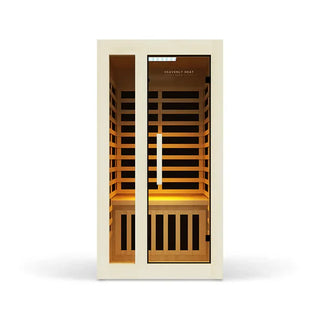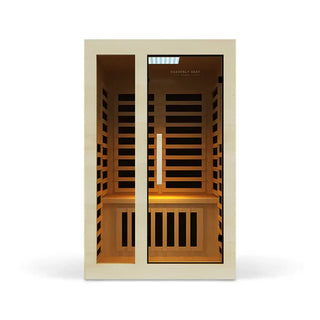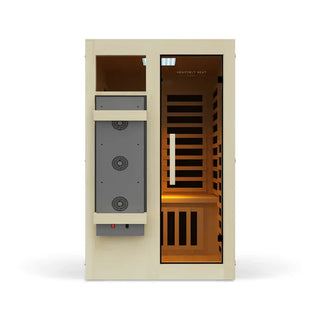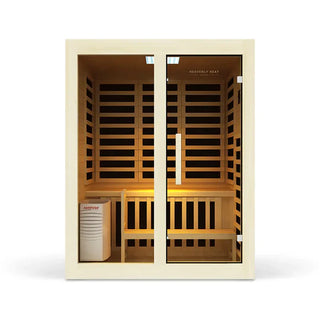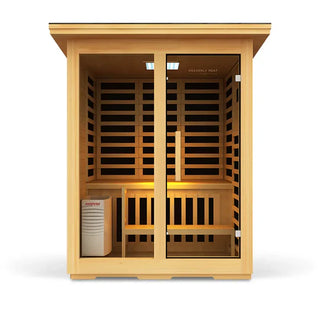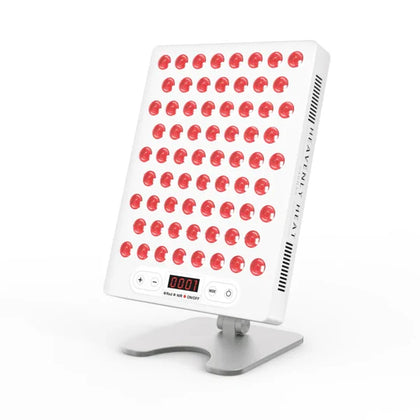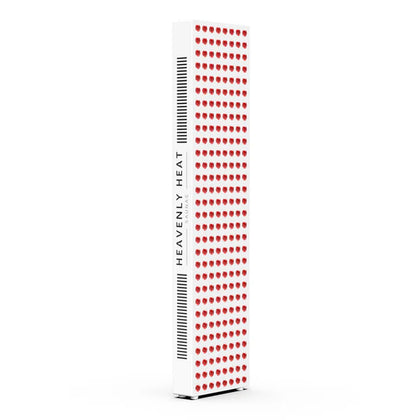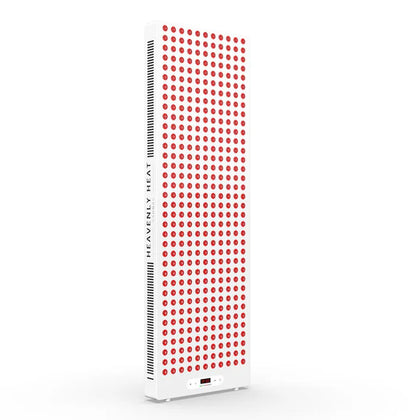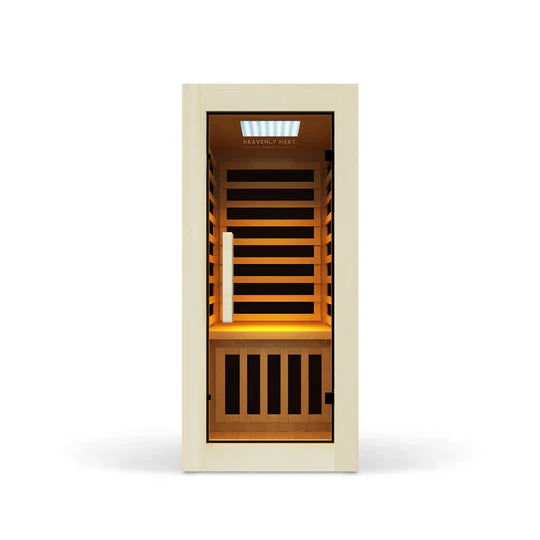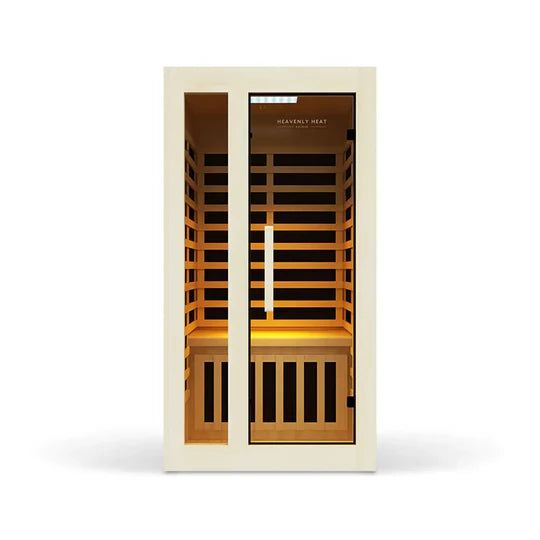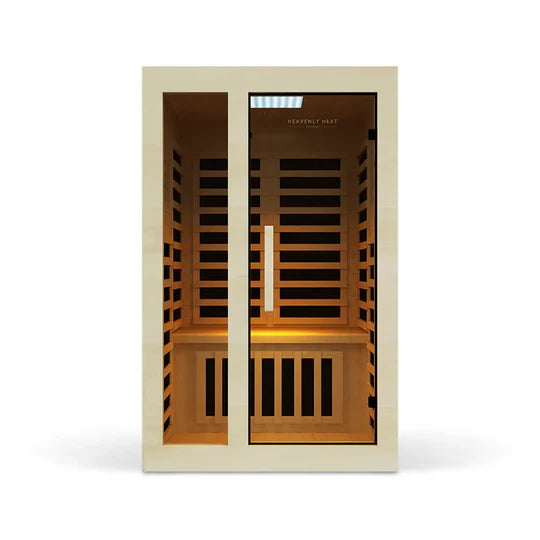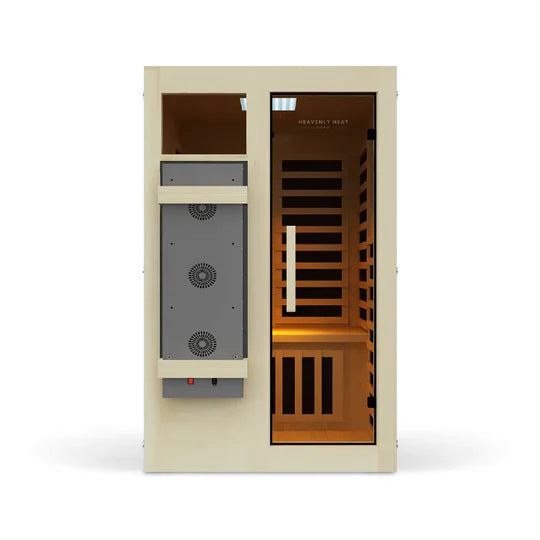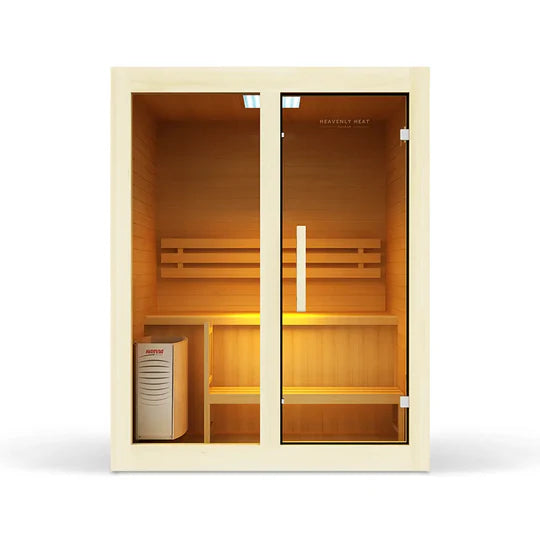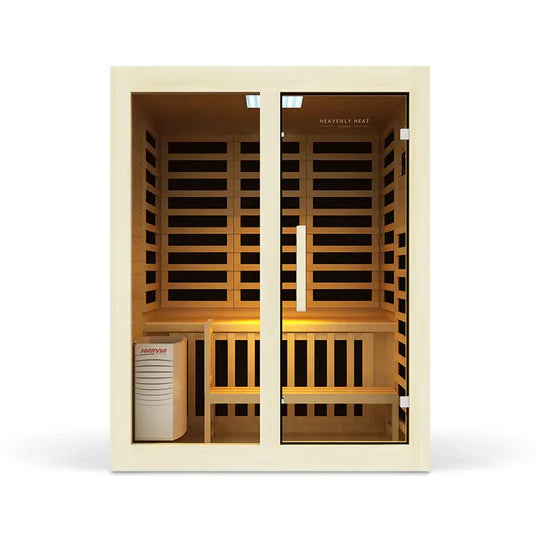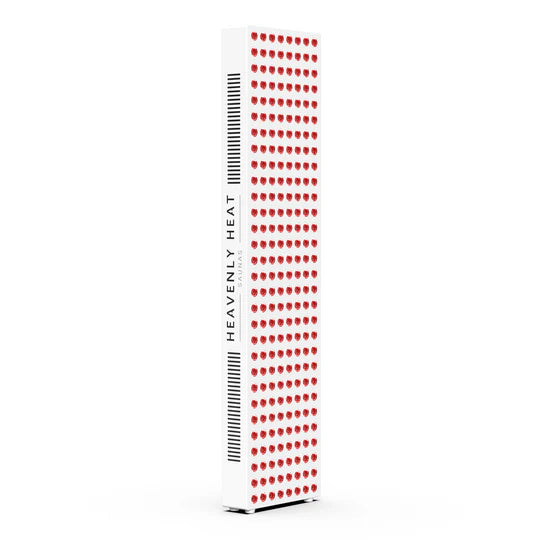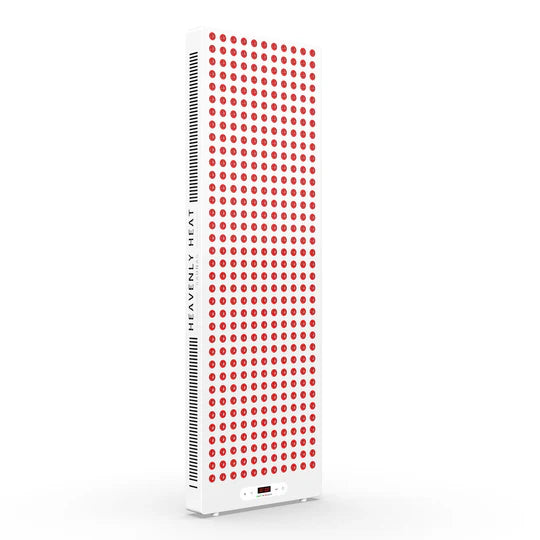Can red light therapy regrow gums?
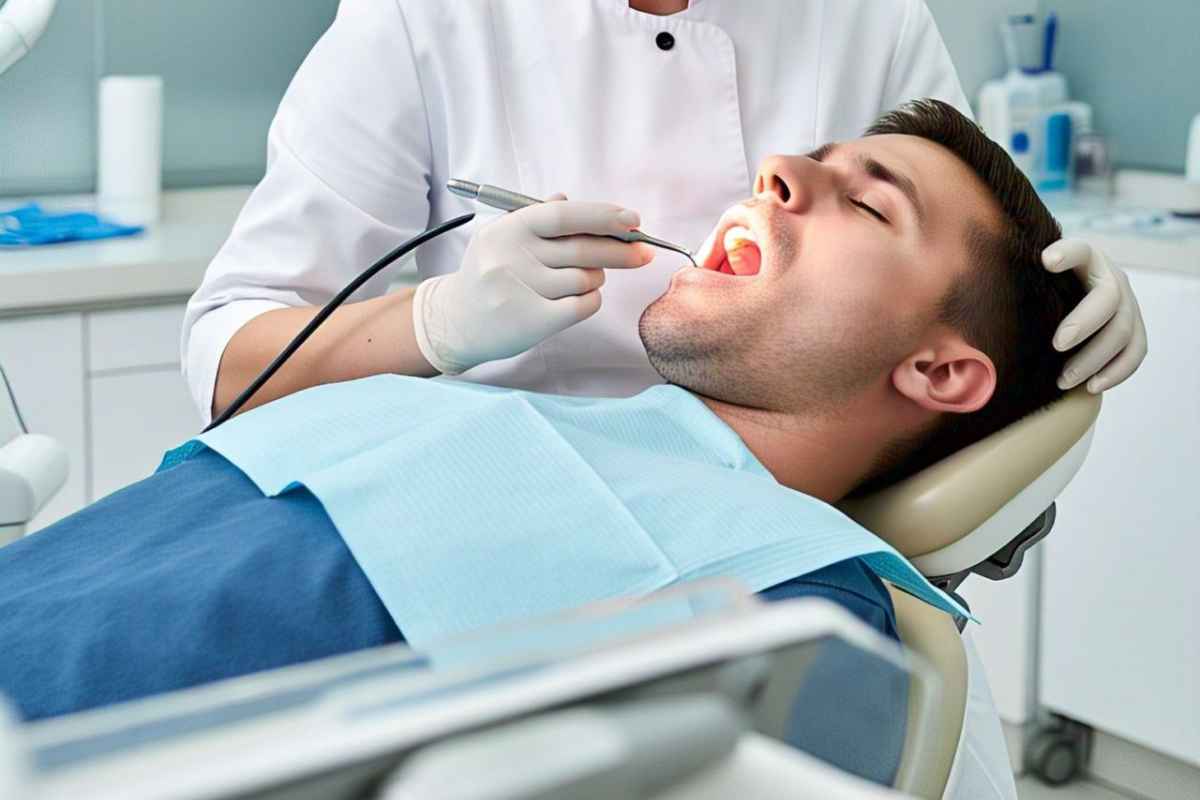
Table of contents
Red light therapy offers a promising solution for improving gum health. By stimulating collagen production, reducing inflammation, and boosting circulation, it helps regenerate gum tissue and accelerate healing.
This non-invasive treatment is easy to use at home and could be the key to maintaining healthy gums and preventing gum disease. Let’s dive deeper into how it works.

Key Takeaways
-
Red light therapy stimulates collagen production and improves gum health.
-
It reduces inflammation, enhances blood flow, and accelerates healing in gums.
-
Red light therapy is a non-invasive, safe treatment that can be used at home.
-
Regular use (5-10 minutes daily) can help with gum regeneration and prevent gum disease.
-
Combining red light therapy with other natural treatments can enhance overall gum healing.
How Does Red Light Therapy Work?
Red light therapy is a treatment that uses low-level wavelengths of red or near-infrared light to promote healing and regeneration.
It penetrates deep into the skin, reaching cells and tissues beneath the surface, usually up to several millimeters. The red light, ranging from 600 to 1000 nanometers, is particularly effective at stimulating the body's natural healing processes.
It enhances cellular metabolism by boosting ATP production, giving cells more energy to repair and regenerate.
This process helps stimulate collagen production and reduce inflammation, making it a promising method for regenerating gum tissue and improving overall oral health.
What Are the Benefits of Red Light Therapy for Gum Health?
Stimulating Collagen Production
"Red LED light targets cells in the skin called fibroblasts, which are crucial for producing collagen – a protein that gives skin its youthful qualities, like plumpness and elasticity," says Dr. Annie Liu, a dermatologist at Huntington Hospital.
Collagen is essential for maintaining the structure and resilience of gum tissue, playing a vital role in oral health.
Red light therapy stimulates collagen production by penetrating deep into the gums, encouraging tissue regeneration and strengthening the gums over time.
This process not only aids in repairing damaged areas but also enhances overall gum elasticity, making them more resistant to recession and disease.
With consistent use, noticeable improvements in gum strength and structure can be seen within 4 to 12 weeks, contributing to long-term oral health.

Reducing Inflammation
Red light therapy effectively reduces gum inflammation by improving blood circulation and promoting anti-inflammatory responses in tissues.
It plays a crucial role in managing inflammation after dental procedures, such as extractions, by accelerating healing and reducing swelling.
By enhancing cellular energy production, it helps tissues recover more quickly and comfortably from gum disease or injury.
Additionally, studies have shown that red light therapy can lower key inflammatory markers, such as reactive nitrogen species, prostaglandins, and the M1 phenotype in activated macrophages, further supporting its ability to reduce swelling and promote faster recovery.
Enhancing Blood Flow
Red light therapy enhances blood flow in the gums, delivering more oxygen and nutrients that support healthy tissue regeneration.
This boost in circulation speeds up healing after gum surgery or injury, helping the gums recover more quickly.
By improving the flow of blood, it also reduces gum sensitivity, allowing the tissues to repair faster and providing better support, which eases discomfort and promotes overall gum health.

Accelerating Healing
Red light therapy accelerates the healing process in gum tissues by stimulating cellular repair and collagen production, leading to faster recovery from gum surgery or disease.
It also helps reduce scarring by promoting smoother tissue and enhancing collagen production, which minimizes the appearance of scars and supports a more natural healing process.
When used alongside other gum treatments, red light therapy further boosts their effectiveness, speeding up recovery and improving the overall healing outcome for better results.
Preventing Gum Disease
Red light therapy can prevent gum disease by improving blood circulation, reducing inflammation, and stimulating tissue regeneration, which helps maintain healthy gums and prevents conditions like gingivitis.
More than 1 billion people worldwide suffer from periodontal (gum) disease, including gingivitis and severe periodontitis, which can lead to tooth loss if untreated.
Pain Relief
Red light therapy alleviates gum-related pain from inflammation, injury, or toothaches by reducing swelling and inflammation, offering a natural, non-invasive pain management solution.
Non-Invasive and Safe
Red light therapy is non-invasive and safe for gum health, improving tissue regeneration without the need for incisions, medications, or antibiotics. It is ideal for sensitive gums and can provide multiple benefits when used regularly.
Red Light Therapy vs. Laser Treatment for Gum Health
Mechanism of Action
Red light therapy enhances cellular activity by improving blood circulation and collagen production, which helps regenerate gum tissue.
Laser therapy triggers photobiomodulation, stimulating cell regeneration and boosting the immune response.
While red light therapy is gentler and more gradual, offering long-term benefits, blue light therapy focuses primarily on whitening teeth by activating peroxide-based gels.
Unlike red light, blue light doesn’t provide the same regenerative or therapeutic effects for the gums, making red light the more effective choice for promoting overall oral health.
Laser treatments, though more intensive, deliver quicker results with a stronger emphasis on immediate outcomes.
However, it’s important to note that certain medications like amiodarone, minocycline, warfarin, and others, can interfere with the healing process, leading to delayed healing, scarring, and increased bruising.
Therefore, understanding a patient’s medication history is crucial before laser therapy to avoid complications and ensure optimal results.
Pain and Discomfort
Red light therapy is painless and provides a warm sensation, making it comfortable for daily use.
Laser treatment, though milder, may cause discomfort, and local anesthesia is often used to minimize pain.
Laser therapy may leave mild soreness for a few days, while red light therapy causes no lingering discomfort.
Treatment Duration
Red light therapy sessions last 5-15 minutes and can be used daily, but they require consistent use over time for gradual improvement.
While at-home devices provide convenience, their results can be inconsistent and often demand a longer commitment to see noticeable changes.
In contrast, professional laser treatments last 30-60 minutes, need fewer sessions, and offer quicker, more visible results, with the added benefit of expert supervision to ensure optimal outcomes.
Effectiveness in Treating Gum Diseases
Red light therapy is effective for mild to moderate gum issues, helping reduce inflammation and accelerate healing.
It shows particular promise in treating chronic gingivitis and severe periodontitis, as it not only reduces bacterial load but also helps decrease inflammation, leading to better overall outcomes.
This therapy promotes tissue repair and improves circulation, which in turn helps reduce harmful bacteria in the gums, making it even more effective in treating infections.
Laser therapy is more effective for severe periodontal disease, as it directly targets infected tissue and promotes new growth.
Recovery Time
Red light therapy has no downtime, allowing immediate resumption of daily activities.
Laser treatment may cause mild swelling and require a few days for recovery, but it heals faster than traditional surgery.
To enhance the effects of red light therapy, it's important to stay hydrated, avoid sun exposure, and wear SPF.
After your treatment, gently wash your face and skip products containing retinoids or alpha-hydroxy acids for at least a week to ensure the best results.
Cost
Red light therapy is a more affordable option, with professional sessions and home devices available at a fraction of the cost of frequent dental treatments.
Compared to costly periodontal procedures or laser treatments, which can be significantly more expensive, red light therapy offers a budget-friendly, long-term solution for gum health, potentially reducing the need for expensive dental interventions over time.
Side Effects and Risks
Red light therapy has minimal side effects, such as a warm sensation or slight tingling.
Laser treatment may cause mild swelling, sensitivity, or minor bleeding, though serious risks are rare.
It works well with dental fillings, implants, and braces, supporting the healing process without interfering with these materials, making it a safe and effective addition to your dental care.
Red Light Therapy Before and After Results for Gums
Red light therapy is effective in repairing damaged gum tissue, improving gum health, and promoting collagen production.
While it can aid in tissue regeneration, it does not fully regrow receding gums. The most effective wavelength for this therapy is between 660nm to 850nm, as studies show these wavelengths penetrate tissue deeply.
How quickly you see results depends on factors like your body’s response, how often you do the sessions, and your overall health.
Some people notice subtle improvements within a few weeks, while deeper healing and more visible changes take consistent treatment over several months.
Results typically start to appear after a few weeks, with more significant changes visible over several months.
How Often Should You Use Red Light Therapy for Gum Health?
Experts recommend using red light therapy once daily for optimal results, with each session lasting 5-10 minutes.
Overuse may irritate gums, so it’s important to follow a consistent schedule without excessive daily sessions.
Incorporating it into your routine alongside brushing and flossing can enhance gum health by reducing inflammation and supporting a balanced oral environment.
Using the therapy once a day or every other day ensures steady improvement without the risk of overuse.
Can You Use Red Light Therapy at Home for Gum Health?
Yes, red light therapy can be used effectively at home. Handheld or mouthpiece devices with wavelengths between 630-680nm work best for gum tissue, helping to improve circulation and speed up healing.
For the best results, choose an FDA-cleared device and use it 2-3 times a day as recommended by experts.
It’s important to pick a device with balanced irradiance (30-80 mW/cm²) to ensure deep penetration without generating excess heat.
With consistent use, about 3-5 times a week, you’ll likely start noticing improvements within a few weeks.
Red light therapy can also support gum recession and regeneration, making it a simple yet effective addition to your oral care routine.
What Is the Ideal Wavelength of Red Light Therapy for Gums?
The ideal wavelength for gum treatment is between 600-650 nm. This wavelength range is optimal for penetrating the gum tissues and promoting tissue regeneration, encouraging faster repair and improving blood flow to the gums.
Can Red Light Therapy Improve Overall Oral Health?
Red light therapy stimulates healing and regeneration in the gums by promoting circulation and accelerating cell repair.
It helps regenerate gum tissue, reduce inflammation, and manage gum disease. This therapy can also aid in slowing the progression of gum disease and encourage healing in receding gums, providing a non-invasive, natural approach to maintaining oral health.
How Can You Combine Red Light Therapy with Other Natural Gum Healing Methods?
Red light therapy can be paired with natural methods like essential oils (such as tea tree, clove, or peppermint oil), which help fight bacteria, reduce plaque, and minimize swelling.
Other complementary approaches include gum massage to improve circulation and strengthen gums, PRP therapy that utilizes platelets to boost healing, and regenerative gels that provide growth factors to repair gum tissue.
Additionally, dietary supplements like vitamin C and omega-3 support gum health by reducing inflammation.
Simple saltwater rinses and natural mouthwashes with calming ingredients like chamomile further enhance gum regeneration, creating a holistic approach to oral care when used alongside red light therapy. Below is a table summarizing these methods and their benefits.
|
Method |
Benefit |
| Red Light Therapy |
Stimulates collagen, reduces inflammation |
| Essential Oils (Tea Tree, Clove, Peppermint) |
Antibacterial, fights plaque, reduces swelling |
| Gum Massage |
Improves circulation, strengthens gums |
| PRP Therapy |
Uses platelets to boost healing |
| Regenerative Gels |
Provides growth factors to repair gum tissue |
| Dietary Supplements (Vitamin C, Omega-3 |
Supports gum health, reduces inflammation |
Non invasive treatments to regrow gums
Laser Therapy (LANAP)
Laser-Assisted New Attachment Procedure (LANAP) uses a laser to remove infected tissue without incisions or stitching, stimulating natural healing and regenerating healthy gum tissue.
It effectively treats mild to moderate gum recession, reduces inflammation, and promotes long-term gum health.
Studies, including one by Yukna et al., have shown that LANAP not only provides immediate benefits but also supports lasting improvements by enhancing gum regeneration and strengthening root attachment.
A 2023 study published in Diagnostics (Basel) found that LANAP leads to a greater reduction in pocket depth and harmful bacteria, particularly Porphyromonas gingivalis, compared to scaling and root planing alone.
Since LANAP already excels at bacterial reduction and tissue healing, pairing it with red light therapy, a treatment known for its anti-inflammatory and regenerative properties, could further enhance recovery and improve overall periodontal outcomes.
Platelet-Rich Plasma (PRP) Therapy
PRP therapy uses a small amount of the patient’s own blood to help heal the gums faster.
The blood is processed to collect platelets, which are then applied to the gums to encourage tissue growth and reattachment. This is especially useful for early-stage gum disease.
Studies show that PRP can help regenerate both bone and soft tissue, making it a useful addition to certain dental procedures.
When combined with bone grafts, it often improves healing, similar to traditional gum grafting.
However, its success depends on the type of graft used. Some studies found that PRP didn’t add much benefit when used with a specific material called β-TCP.
Electrical Stimulation Therapy
Electrical stimulation is a gentle therapy that helps gums heal by improving blood flow, boosting collagen production, and reducing inflammation.
Research published in RSC Advances shows that it also helps cells move to the right places for faster tissue repair.
A clinical study on microcurrent electrical neuromuscular stimulation (MENS) found that it significantly improved gum health in people with chronic periodontitis, making it a valuable option for non-surgical gum treatment.
Now, with at-home devices available, you can easily add this therapy to your daily oral care routine.
It may speed up gum healing and reduce swelling, similar to how electrical stimulation relieves pain in conditions like lumbar radiculopathy by blocking pain signals and triggering the release of endorphins.
Another similar treatment, low-level laser therapy (LLLT), is sometimes even more effective for nerve pain, but both methods work by improving cell function and helping tissues recover.
Whether used at home or in a dental office, electrical stimulation is a simple and non-invasive way to support healthy gums.
Gum Massage
Gum massage promotes healthy gums by stimulating circulation and improving nutrient delivery to tissues.
For individuals with periodontitis, it can help reduce inflammation, alleviate sensitivity, and support the healing of weakened gum tissue.
Incorporating oils like sesame, olive, or coconut oil into the massage can amplify these benefits.
A study found that these oils help reduce harmful bacteria like Streptococcus mutans and Lactobacillus, further enhancing the effectiveness of the massage and supporting overall oral health.
Using oils like coconut or tea tree oil can also strengthen gums and boost oral health, making gum massage even more beneficial.
Use of Regenerative Gels and Patches
Regenerative gels and patches support gum tissue regeneration by providing growth factors and collagen.
These can be applied directly to the gums to help rebuild lost volume and reduce recession.
Topical Use of Essential Oils
Essential oils like tea tree, clove, and peppermint oil are popular for their antibacterial and anti-inflammatory properties.
They can be massaged into the gums or used in mouth rinses to reduce bacteria and promote healing.
Research has shown that oils like eugenol, peppermint, and tea tree are especially effective against oral pathogens, offering strong antibacterial protection.
These oils not only help in fighting harmful bacteria but also contribute to overall gum health and comfort.
In fact, essential oils have been identified as a promising alternative to prescription gum treatments, offering similar antibacterial effects without the risk of developing drug-resistant bacteria that often result from prolonged antibiotic use.
Dietary Supplements
Vitamins (e.g., C, D, calcium), omega-3 fatty acids, and antioxidants help reduce inflammation and support gum health. '
Probiotics balance oral bacteria and may prevent gum disease when used alongside good oral hygiene.
While supplements can provide extra support, they work best when combined with a complete oral care routine, including regular brushing, flossing, and dental check-ups.
FAQs
Can Red Light Therapy Be Used to Prevent Gum Recession, or Is It Only Effective Once Recession Has Already Occurred?
Red light therapy can help prevent gum recession by stimulating blood flow and collagen production. It’s effective at any stage of gum recession, even in the early stages, and can help maintain gum health and prevent further damage.
Are There Any Long-Term Risks or Side Effects of Using Red Light Therapy for Gum Health?
Red light therapy is generally safe, with minimal risks. Overuse may cause mild irritation or sensitivity, but there’s no evidence suggesting it worsens gum disease. It’s a low-risk treatment when used properly.
How Does Red Light Therapy Interact with Other Dental Treatments or Procedures for Gum Regrowth?
Red light therapy can accelerate healing after traditional gum surgery, gum grafting, or laser treatments. It also complements other therapies like ozone therapy and enhances the effects of mouthwash treatments.
How Soon Can You Expect to See Results from Red Light Therapy for Gum Regrowth?
Results from red light therapy vary, but improvements in gum health can often be seen within 2 to 4 weeks of consistent use. Full regrowth may take 4 to 6 weeks, with noticeable changes after 6 to 10 sessions.

